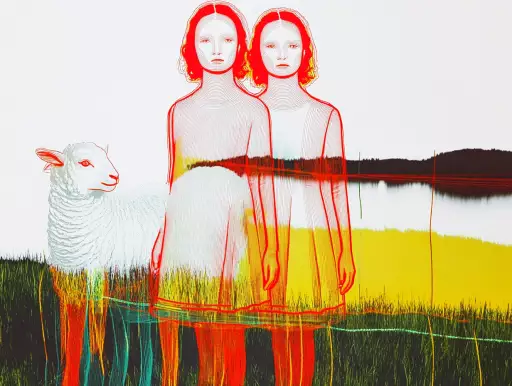Explore the Best AI Image Gallery

Pixels and Perceptions: AI-Generated Images in the Art World
The world of art is constantly evolving, with new technologies pushing the boundaries of creativity and expression. One of the most recent and impactful innovations is the emergence of AI-generated images. These images, created by sophisticated algorithms trained on massive datasets of existing artwork, are sparking both excitement and debate within the artistic community and beyond.
A New Creative Frontier
AI art generators offer artists and designers a powerful new toolset. They can be used to:
- Generate unique and imaginative visuals quickly and efficiently
- Explore different artistic styles and techniques
- Create custom imagery for projects such as graphic design, advertising, and film
- Personalize artwork based on user input or preferences
The Impact on the Creative Industry
The arrival of AI-generated images has undoubtedly disrupted traditional artistic practices. Some argue that it threatens the value of human creativity and devalues the work of established artists. Others see it as a liberating force, empowering individuals to create art without technical expertise and democratizing access to creative tools.
One significant impact is the potential for increased efficiency and affordability in the creative industry. Businesses can leverage AI to generate marketing materials, product visualizations, and other visuals at a faster pace and lower cost than traditional methods. However, this raises concerns about job displacement for artists and designers who may find their skills rendered obsolete.
Ethical Considerations
The use of AI in art raises several ethical considerations that require careful consideration:
- Copyright and Ownership: Who owns the copyright to AI-generated artwork? The creator of the algorithm, the user who inputs the prompts, or the AI itself? This legal ambiguity is currently being debated and needs clear guidelines.
- Bias and Representation: AI algorithms are trained on existing datasets, which can reflect societal biases and stereotypes. This can result in AI-generated images that perpetuate harmful representations and lack diversity.
- Authenticity and Transparency: The increasing use of AI in art raises questions about authenticity and transparency. Consumers may be unaware that they are interacting with AI-generated content, which could mislead or deceive them.
Future Trends
The field of AI-generated art is rapidly evolving, with ongoing research and development pushing the boundaries of what is possible. Some future trends to watch include:
- More sophisticated and versatile AI models:**
- Increased personalization and customization options for users
- Integration of AI into existing creative workflows and tools
- Emergence of new artistic genres and styles unique to AI generation
Conclusion
AI-generated images are undoubtedly transforming the art world, presenting both opportunities and challenges. While some may view it as a threat to traditional artistry, others see it as a catalyst for innovation and exploration. As this technology continues to evolve, it will be crucial to engage in thoughtful discussions about its ethical implications and ensure that it is used responsibly to enhance creativity and artistic expression.